Burning Man, 2019: The annual, radically inclusive pop-up city in the Black Rock Desert of Nevada was teeming with people, many of them pursuing alternate approaches to life, self-expression, and consciousness itself. Some found it in music or art. Some found it in substances.
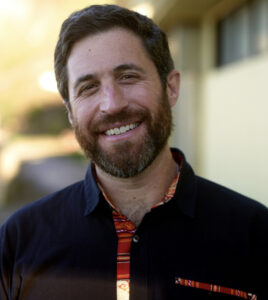
Among the tens of thousands that year was Joshua White, a volunteer with the Zendo Project — which provides in-person, harm-reduction support for those on psychedelics. Another was Hanifa Nayo Washington, a musician and reiki healer with years of experience in community service and activism.
Both had experiences — profound ones — with psychedelics. For White, the drugs had helped resolve his relationship with his own anxiety and accept himself “as a whole person.” For Washington, taking them in a ceremonial context had allowed her to heal and spend time with her “child self.”
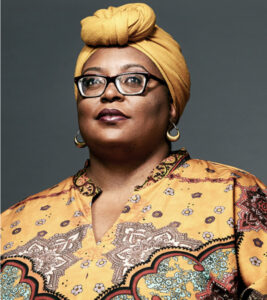
Both knew there were inherent risks. Some experiences can be extreme. Some can be terrifying, prompting calls to 911. And as psychedelics surge in popularity, those risks are affecting a broader population of people who might try them and trip on them alone, unprepared, unaccompanied, and overwhelmed — all of which can pose significant dangers. Both saw all of this in the context of social justice.
They met. They talked. In the summer of 2020 — in the throes of pandemic, in the aftermath of George Floyd’s murder, in a period of protest and uncertainty — they talked some more, zeroing in on underserved populations and people who take psychedelics on their own.
Someone might need a sympathetic ear. A sympathetic voice. A peer who understood — who could assess their safety and assure them they’re OK. Maybe volunteers in the “psychedelic space” could sit with them, however remotely, as they work through their experiences, present and past. Maybe they could follow-up with check-in calls, making those who reached out feel even more connected and supported.
“We already know people are using psychedelics — and since they’re being legalized and decriminalized, we also know that, still, the majority of people accessing and interfacing with psychedelics is not going to be in a clinic,” said Washington. “It’s going to be outside of the clinic.” Given that, “It would be irresponsible of us not to create safety protocols — processes — so that people aren’t falling into risky behavior and situations. So we want to minimize the risk.”
The vision, in White’s words: “Every single person can have access to high-quality peer-to-peer support during and after their psychedelic experiences. They don’t have to have money. They don’t have to be able to afford a therapist or go to a clinic. Every single person in the world that has a phone can have access to support.”
The result: Fireside Project. The nonprofit support line launched on April 14, 2021 — offering free, confidential, psychedelic peer-support in the U.S. (at least for now) to virtually anyone, on virtually any substance, in virtually any circumstances. White is its founding executive director; co-founder Washington is chief strategic officer. Equity, harm reduction, education, and hope are its goals.
“The harm-reduction piece — that’s what, to me, is so great about Fireside. It’s non-judgmental. It’s accepting people,” said Fola Vickers, one of Fireside’s three staff supervisors who observe calls.
Added Katie Bourque, its operations and outreach director: “This is the first real opportunity for everyone to have this equal access.”
Snapping on a seatbelt through the ‘psychedelic renaissance’
Co-founder of the Cognitive Liberty Project, Bourque had performed peer-support work for a decade — formerly managing the Pathways Vermont Support Line and Soteria Vermont therapeutic community — before connecting with Fireside.
As someone with both lived psychiatric experience and “transformational” experience with psychedelics, “I saw it as just this perfect opportunity to kind of bridge the peer-support model and world and the psychedelic space. . . . As psychedelics become medicalized, it’s really important to have a pure voice in that side of things,” she said. “Also, as psychedelics become decriminalized, to make sure we’re offering harm- and risk-reduction services in the community. That’s what drew me to Fireside Project.”
In discussing their role, the Fireside organizers use a few simple analogies. One that pops up frequently is the safety net; White, for one, observed that people take chances when they choose to have sex or drive a car, and there are ways to reduce risks for both. But Washington took the analogy further, comparing the Fireside support line specifically to a seatbelt.
“Sitting in a car isn’t inherently harmful, but you’re putting yourself at greater risk if you don’t use a seatbelt. It is a tool. It is a protocol for safety. . . . We are here as a safety tool to make that space safer and reduce potential risks,” Washington said. “So that, in and of itself, to us is social justice. It is equity.”
The broader, non-judgmental harm-reduction concepts behind Fireside aren’t new, stretching back to the 1980s and the so-called “CNN approach” (“condoms, needles, and negotiation”) in limiting the spread of AIDS. Nor is the harm-reduction model for helping people on psychedelics entirely unprecedented. Back in the 1970s, a program in North Adams, Mass., maintained an “Emergency Trips” hotline for people in the midst of challenging psychedelic experiences.
Half a century later, the need for such harm-reduction approaches is even more pronounced as psychedelics seize more attention than at any time since the mid-20th century. Much ink has been spilled, of late, in mainstream publications and best-selling books, most notably Michael Pollan’s How to Change Your Mind: What the New Science of Psychedelics Teaches Us About Consciousness, Dying, Addiction, Depression, and Transcendence. Drugs like psilocybin and MDMA are now being decriminalized, even legalized, in various locales. Their efficacy in treating depression, anxiety, addiction, and PTSD is being analyzed in drug trials performed by researchers at academic institutions.
And even as researchers are conducting such trials, many proponents are framing the drugs as an alternate or antidote to the existing psychiatric drug paradigm — which is traditionally fixated on symptoms and prescribing for years, if not for life. Psychedelics are different, such voices say. They don’t numb. They aren’t prescribed over some vague long term.
Yet psychedelics are, after all, drugs — with the potential for negative outcomes, be they negative trips on psilocybin or accounts of ketamine withdrawal. People are turning to them in settings both legal and not. They’re participating in trials, going to clinics, flocking to retreats, trying mood-adjustment microdosing, paying for psychedelic-assisted therapy or — likelier, for those without the money — seeking out a handful of mushrooms on their own. Sometimes alone. Often without any support, guidance, knowledge of the chemicals they’re taking, or presence of someone, anyone, who might help them navigate a challenging psychedelic experience or process a past one.
“With psychedelics, there are definitely risks,” White said. “And those risks are higher if a person doesn’t have support during the experience.”
Minimizing risk with a sense of mission
Such risks can vary. One is the potential for a bad trip — especially for someone going it alone, and especially for those seeking to self-treat their mental-health struggles: In the Global Drug Survey 2020, 4.2 percent of respondents who reported using psychedelics as self-treatment in the previous year wound up seeking an EMT. But a rough trip can be hard for anyone to navigate and, later, to integrate: In a survey from 2016, 39 percent of 1,993 respondents rated a negative psilocybin experience as “among the top five most challenging experiences of his/her lifetime. Eleven percent put self or others at risk of physical harm.”
However, the Fireside leaders note that not everything that’s perceived as an emergency during a trip actually is one. That’s one risk Fireside Project can lessen in performing initial triage: Is someone in danger? Do they need to go to the E.R.? After that, volunteers “sit” with callers or texters in the midst of navigating something new, and strange, and potentially frightening.
As Fireside’s website makes clear, it doesn’t provide medical services. It doesn’t provide mental-health advice or care. It doesn’t provide advice for the psychedelic-curious. Its volunteers aren’t “guides,” a term in the psychedelic community that delineates a much more specific and active role. And the organization recognizes, as the website also makes clear, that “psychedelics aren’t for everyone.” It cautions: “If you have a personal or family history of schizophrenia, bipolar disorder, or certain other disorders, or if you’re taking certain medications, consult a professional before taking psychedelics.”
What it does do is laid out in a mission statement at the top of the home page. It aims to lessen risk. Maximize potential. Provide compassionate, accessible, culturally attuned support. Educate the public. Further research. Increase equity and power sharing “within the psychedelic movement.”
Listed further down the page are 10 basic safety practices, among them directives to do research before trying a drug; to test the substances they are about to consume for content; to make sure they have access to water and a bathroom; and to make time for integration, post-trip. It also urges visitors to “Be Mindful of Set and Setting,” a concept first articulated in the 1960s by psychedelic trailblazer Timothy Leary. It explains: “Set is your inner world. Setting is your external environment — this includes where you are and who is with you. Avoid public settings.”
The idea, with all of this, is to smooth the way and provide emotional support. But not from just anyone — from someone who understands, a fellow “psychedelic citizen” with their own mind-altering experiences.
“There’s a number you can call to be helped without judgment. And it’s a peer! It’s another citizen, it’s another person who’s had their own experiences with altered states — and also understands the importance of having peer-to-peer support in those experiences,” Washington said. She continued: “When we talk about medical models and mental health, and mental care, we believe that peer-to-peer support is an essential tool and avenue.”
Keeping it simple, keeping them safe
With harm reduction in mind, the basics of Fireside Project are exactly that. Basic. Anyone in the U.S., at any hour between 3 p.m. and 3 a.m. Pacific Time, on any day of the week, can text or call 62-FIRESIDE (623-473-7433). Those in need of support can also use the Fireside app, opening it up to see two large buttons. One says “call.” The other says “text.” After swiping back and forth a bit, a sequence of gently encouraging messages take the screen.
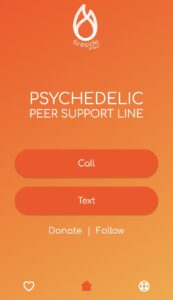
The target population is wide, offering support for people currently on trips, usually alone and seeking companionship; for folks processing past trips, whether days or years ago; for sober people in the midst of “trip-sitting” someone else; for therapists, facilitators, or anyone in a clinical, ceremonial, or other group setting who’s in some form of distress or simply needs to feel heard.
Its definition of “psychedelic” is broad, too, including psilocybin (mushrooms), MDMA (ecstasy), LSD (acid), mescaline (peyote), DMT (part of ayahuasca, an indigenous Amazonian brew), and others. Also under the umbrella are ketamine, an anesthetic with dissociative effects that’s now being prescribed for depression, anxiety, and alcohol addiction; and cannabis, currently legal for recreational use in 19 states, which can yield psychedelic effects, at least for some people, at least at some doses.
The word “hallucinogen” is often avoided, as not all psychedelic experiences involve hallucinations. And within the community of those who consume these substances — the “psychedelic space” — many are referred to as “plant medicines,” which emphasizes their ancient roots, literal and figurative, in traditional indigenous practice.
On a call or text conversation, the protocols are both flexible and firm.
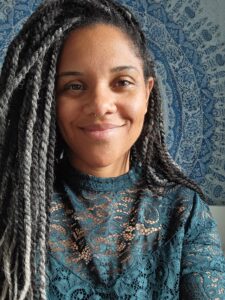
When someone reaches out, Fireside immediately determines their safety and altered state. That’s “the first rule,” said Fola Vickers. Everyone who phones or texts hears or reads a disclaimer urging them to contact services if, in fact, they’re in a medical emergency. After establishing that they’re not, the person is connected with someone, usually a volunteer on a four-hour shift.
The support line is private and strictly anonymous. But as many details as possible are gleaned from the start, she said: “Like, hey, what is this person looking for, exactly? Are they currently tripping? Are they seeking integration for a trip that maybe happened recently? Is it even appropriate?” Someone might have dialed the wrong number, she said. Or called in search of a contact number, a website, or some other resource that Fireside can’t provide.
Something else volunteers can’t do on a call: provide advice. That’s not their purview — not while psychedelics remain illegal in so many jurisdictions. The project, supported by a California nonprofit called the Social Good Fund and aided by donors including Dr. Bronner’s organic soap company, can’t be seen as promoting potentially criminal behavior. As it states in its disclaimer: “Fireside Project does not encourage or condone any illegal activities, including but not limited to the use of illegal substances.”
But once they go through the initial hoops, those who reach out to Fireside are encouraged to make themselves comfortable (do they need a blanket?) and, well, to talk. The role of the volunteer is, well, to listen. To be with a person, responding to their fears and feelings and needs in a space as welcoming and warm as a fireside. Extensive volunteer training emphasizes this goal: “During the training, you’ll learn about active listening, self work, how to provide support during and after a psychedelic experience, the ethics of providing psychedelic peer support, and how to support someone by text message.”
“These are people who have understanding, because they, too, have been in some shadowy places,” Vickers said. Although volunteers and staffers all meet and share online for regular group-support sessions, she doesn’t know everyone’s psychedelic backstory. But whatever their experiences, she’s certain it helps. “I see how that’s supported me in being able to sit with someone.”
Tracking the numbers anonymously
And sitting with callers is, say Vickers and others, the key: Simply being with someone is different from diagnosing them, treating them, trying to correct them. A private-practice psychiatric nurse in Alberta, Canada, Vickers formerly worked on emergency-response teams. Before, she would enter homes alongside police and bring people to the hospital against their will. But then, as she entered her own “spiritual emergence,” she began to question that model. It’s why she left. Peer support plays a different role, she said.
“It goes from that place of ‘fix and save’ — in our old, sort of, way of health care— to now being, ‘We don’t need to pathologize what you’re going through, or say it’s wrong. Or make it a certain way because it makes us uncomfortable.’” Instead, “It’s just, like, allowing whatever is present — and trusting that that person is going to move through whatever they need to move through in their own time.”
Or, as Washington expressed it: “We are taking the shame — right? — and blame out of those who are experiencing it, and leveling the playing field.”
The organization’s volunteers hail from time zones around the world, helping Fireside to cover red-eye shifts over its 12-hour service window (which will expand, eventually, around the clock). Asked for interviews with volunteers and past support line users — or, short of that, descriptions of previous calls — Fireside declined, citing their policies regarding privacy and anonymity.
However, in several Reddit postings over the last several months, former Fireside callers have praised the support line with succinct endorsements. Said one: “If you guys don’t know what Fireside project is they are the shit! Absolutely awesome people. . . . If you or someone you know needs help processing an experience or is currently going through one make sure you hit them up.” Said another: “I used your services after an experience and it helped me a lot. I needed to talk to someone who got it. . . . Very chill and professional.”
As of early December, White said, Fireside had engaged in 1,300 conversations, about half of them via text. In a collaboration with the University of Southern California, San Francisco, the organization is tracking its numbers — looking at support-line users who choose to fill out an anonymous survey. The aim, they say, is to show how many people are calling, why they’re calling, which groups of people are calling most, and to what extent the project minimizes calls to 911, alleviates psychological harm, and reduces other risks related to psychedelic use.
So far, around 60 percent of the calls and texts are folks integrating past psychedelic experiences; about 30 percent are actively tripping. The remaining 10 percent, more or less, is “a mix of people seeking pre-trip advice (which we don’t provide) and calls otherwise outside the scope of the lines,” White said in a follow-up email. And in a figure tweeted out by the project, “30% of survey respondents suggested they might have otherwise called 911 or contacted emergency services had they not contacted @GlowFireside.”
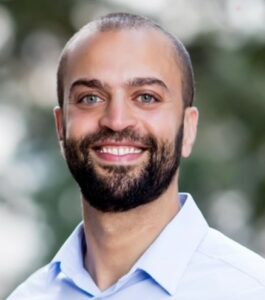
Generally, those who use Fireside for help processing past trips aren’t at similar risk — unless they happen to be suicidal, said Joseph Zamaria, the principal investigator in the UCSF study and an associate professor of psychiatry at the UCSF School of Medicine. “But probably not. It’s probably more, maybe, existentially weighty to try to make sense of that experience.” In such cases, it’s helpful “to bounce ideas off an empathic, informed listener.”
Zamaria, who’s also a clinical psychologist and researcher in various and ongoing psilocybin trials at UCSF, considers this especially important in an era of widespread isolation. Even before the pandemic, he said, society stood in “dire mental health circumstances.” Getting help — any kind of help — isn’t easy. “So a lot of people turn to psychedelic medicine and do this on their own. . . . Fireside’s service is really important, because it offers guidance. It offers support.”
Yin and yang, shadow and light
For those with no first-hand knowledge of psychedelics, the conversation around them can be mystifying: By their nature, the effects are hard to describe. Experienced “psychonauts” describe states that alter perception, shatter boundaries, connect the self to the wider realm, and bring a child-like wonder to the fore. A trip is a trip — a journey into and beyond the consciousness, often resulting in spiritual epiphany.
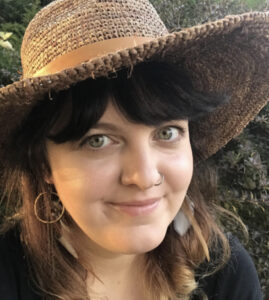
Katie Bourque called this “the human quest for transformation.” Whether pursued through psychedelics or some other means, it’s the urge “to get beyond the self and onto some different plane.” She knows because she’s been there herself. “I personally have experience using psychedelics — and finding them to really be transformational experiences.”
In 1954’s The Doors of Perception, Aldous Huxley described his own transformation on four-tenths of a gram of mescaline. The usual spatial and temporal information, he wrote, ceased to matter. What enveloped him instead, “I can only describe as the sacramental vision of reality . . . in a world where everything shone with the Inner Light, and was infinite in its significance.”
More than six decades later, in How to Change Your Mind, Pollan detailed his own supervised experimentation — first with LSD, then psilocybin, and finally with the toad venom 5-MeO-DMT (aka “The Toad,” or “The God Molecule”). “The personal had been obliterated,” he wrote of his trip on psilocybin. As a Yo-Yo Ma recording of a Bach cello suite played in the background, “I lost whatever ability I still had to distinguish subject from object, tell apart what remained of me and what was Bach’s music.”
But not all trips are easy ones — as Pollan learned firsthand in his nightmarish experience on the Toad. Even the most revelatory trips can have elements that can alarm those who take a sizable dose. What’s more, Pollan’s account of losing himself is not uncommon — that sense of connectedness on some higher plane, some infinite universe, can also involve a dissolution of the ego.
“You feel like you’re dying,” White confirmed. “So a person who didn’t have really any knowledge of how psychedelic experiences work may believe that they’re actually dying — and then call 911. Or it could be they have someone to take them to the emergency room. That carries its own risks, right? Especially if calling 911 means that you interact with law enforcement, and you’re a person of color.”
Factoring in all such complexities of experience, White sees the mission of Fireside Project as “having two parts that are yin and yang: We help people reduce the risks and fulfill the potential for their psychedelic experience.” Expanding on this, he said, “By creating a safe container for people, that reduces the risks — because it allows this person to feel a sense of security and comfort and connection. And it’s precisely the creation of that safe container that also allows the person to turn towards the experience and fulfill the potential.”
That yin and a yang can be present in the trip itself. In Vickers’ case, she’s never experienced an ego death, but she understands “that light and that shadow” — that is, the complexity that some might encounter on any trip. “People have different journeys, different paths that they need to take — and they have these understandings of their reality in different ways,” she said.
White cited a quote from Stanislav Grof, the psychiatrist known for his work with non-ordinary consciousness (whether attained through psychedelics or holotropic breathwork). “Psychedelics are to the mind what the microscope is to biology and the telescope is to astronomy,” he once stated. Meaning: They gaze into the depths and magnify distant truths.
“That can only happen if you feel a sense of safety and security,” White said. “If you’re out in the world on a psychedelic” — and by “the world” he means the mundane, physical realm — “and there are people around you who don’t understand you, there are loud noises, there’s intensity all around you? Having your subconscious amplified can be risky.”
Something to move through, not manage
According to many in the psychedelic sphere, that very intensity suggests significant differences between such substances and standard-issue psychiatric drugs like SSRIs. Psychedelics are not, they say, business as usual.
First: Most people aren’t on them for long. In clinical settings, they might take limited doses paired with multiple sessions of psychotherapy, held before as preparation and after for integration. For some clinical trials exploring the effects on PTSD, for instance, “It’s three sessions of MDMA,” said Bourque. “Not, like, somebody being on medication for the rest of their lives. I think a lot of time somebody goes to a doctor and they’re, like, ‘Here’s an antidepressant forever.’ Right?”
Second: There’s a difference in the effects of psychedelics on the mind. The usual modes of thinking and feeling are not muted, as they are with so many psychiatric drugs; instead, in the midst of that mind-bending transformation, they’re upended. In the literature and commentary on psychedelics right now, a frequently cited image is the snowglobe — something that shakes people out of their cognitive and emotional ruts, whether depression, anxiety, or addiction.
Compare that, Bourque said, with the western model of diagnosis and treatment — which focuses on symptoms and strives to blunt them.
“Speaking from personal experience, as somebody that’s been on a psychiatric medication and also taken psychedelics, I think the difference that I personally experienced was that instead of symptoms being something to be managed or reduced, with psychedelics, it’s something to move through.”
Still, question marks hover over this emerging field. What are the potential psychedelic downsides for people prone to their own altered states? As it stands, those with “current psychosis or who are at risk for psychotic disorders” are considered too much at risk and are, therefore, excluded from psilocybin studies. In addition, researchers are exploring the association between such diagnoses and cannabis use. Other risks include the possibility of “flashbacks,” or post-trip sensory disruptions that the Diagnostic and Statistical Manual labels as Hallucinogen Persisting Perception Disorder (HPPD). Also: Will Hall, in a piece for Mad in America, wrote about the harm induced by abusive psychedelic therapists.
Beyond psilocybin, question marks also hover over other drug trials being conducted, many of them short-term studies with few subjects and notable downsides. Recent analysis of clinical trials for esketamine, a drug made from ketamine and prescribed for treatment-resistant depression, showed uncertain-at-best efficacy and serious adverse effects — including heart attacks, strokes, car accidents, and deaths by suicide. Another study of ayahuasca’s efficacy in relieving anxiety, depression, and stress pointed to results no greater than a placebo’s.
Still other concerns involve the sheer force of a capitalistic system that could, some fear, grant more and more power to pharmaceutical companies that are more and more bent on monetizing such drugs. The longstanding hierarchy is already skewed. What will happen as psychedelics are medicalized further? What happens if the effects of those limited doses wear off? And what about the move toward microdosing, or the consumption of small, sub-hallucinogenic quantities of psychedelics as a way to reduce symptoms of depression and anxiety? Doesn’t that suggest a disease model redux?
“We’re fearful of how Big Psychedelics Pharma is going to develop,” said Washington. Because of that, “We want to ensure that in the event patients need support that they at least have the psychedelic peer support — because what we anticipate is that a lot of people will move through medicalized psychedelic experiences” — and then, later on, want to integrate them.
“We have to be mindful that we’re not just turning and giving our power away to this medicine,” Vickers said. “Which we’ve done within our pharmaceutical industry already: Giving power to doctors, giving someone a pill.” That runs counter to the whole concept of psychedelics. “Psychedelics show that you have the power within you already” — through the substances themselves or other consciousness-shifting practices.
Psychedelic social justice
In White’s own life, psychedelics offered a distinct yang, helping him to listen, and learn, from elements deep within him. “There’s this progression, you know: First there’s learning about yourself, and the different parts of yourself — and then there’s the acceptance of those different parts. And then, for me, the final step in that pathway is loving all the different parts.”
A former attorney, he spent 17 years in civil litigation, 11 of them for the San Francisco City Attorney’s Office, where he focused on lawsuits against businesses that took advantage of underprivileged communities. Back in 2020, as the origins of Fireside unfolded, White considered his work with Zendo Project and Talk Line, a San Francisco harm-reduction support line for parents. He’d been thinking about the poor and uninsured, about inequity and need.
“I just really had the sense that the world seems like it’s coming to an end. And if I’m not going to do everything I can now to change that,” he asked, “why am I even alive?”
In their conversations back then, Washington floated a question of her own: “What is the greatest possibility of what this could do? Who is it serving? Who is it who’s not at the table?”
The answer: Many.
From the advent of psychedelics in the 1950s to their rebirth now, the prevailing culture that surrounds these mind-bending chemicals has been mostly — blindingly — white. So have the western-dominated researchers who coopted indigenous rituals and ignored the contributions of disenfranchised groups (once again a concern, given the increasing popularity of South American ayahuasca retreats). Adding to such inequity, over the last half-century, has been the endless “war on drugs” targeting African-Americans — giving BIPOC people yet more cause for hesitancy in reaching out for help.
In the current renaissance, whiteness again prevails. Most researchers are white. Most psychologists are white. Most people who can afford treatments are white.
And that right there, Zamaria said, is “the social justice piece to it.”
“Because it’s like, only a very select few folks can get into the current clinical trials that are happening across the country. When those therapies become legal, they’re going to be privatized, and probably really expensive.” If someone has the money, they can “do a bougie clinic. . . . But what if you can’t afford it? You find some mushrooms for a handful of dollars. And so Fireside’s presence really has, I think, inequity in mind, because it’s supporting folks who don’t have the resources to experience these medicines in other, sanctioned ways.”
In the data from Fireside, the gap in privilege is already manifest. Of the roughly 20 percent of Fireside users who’ve responded so far on the survey, the “overwhelming majority” are white — no hard numbers, just yet, on exactly how many. White said slightly more than 50 percent are women; a “very, very small number” identify as trans and non-binary. Such numbers underscore the need to make sure, as people flock to psychedelics, that the “safe space” is extended to everyone.
The circumstances of someone’s psychedelic intake make no difference, Washington said — or they shouldn’t. Someone might have received a lozenge in the mail from a ketamine clinic, or they might be sampling some mushrooms they grew themselves. It doesn’t matter. “Because it is a free service that anybody can access who has a phone. So if you don’t have the resources to afford a psychedelic therapist or integration coach — you’ve had a psychedelic experience, and you need some grounding and support to be able to process that — you can call Fireside.”
Bourque agreed. “Offering peer support that’s free and accessible to everyone, regardless of how they access psychedelics — I just think there’s a need for that. It’s, like, really phenomenal, because it’s across the board.” Gone are the compartmentalizations in how services are provided, she said. Gone is the money needed to access them. Gone is the gap in entitlement. There is, she said, “a lot of privilege in some of those experiences.”
‘Pumping the brakes a little right now’
And as the psychedelics continue to surge — in popularity and profile, in legalization and medicalization — the social-justice piece is even more pressing. Although sale, possession, and use remain illegal under federal law, 12 municipalities across the country have deprioritized policing and legal action on psilocybin; a 13th, Detroit, decriminalized it, and dozens more cities are considering similar measures. Only one state thus far — Oregon — has gone whole hog in decriminalizing use and legalizing medical use, but active legislation is now being considered in another 10. (For more granular information, see the Psychedelic Legalization & Decriminalization Tracker.)
Clinically, FDA-sanctioned trials at American universities — and other trials around the world — are gearing up on a wide array of psychedelic fronts.
Among them are multiple studies of psilocybin’s effect on depression, with many more trained on the drug’s efficacy for people diagnosed with OCD, bipolar disorder, body dysmorphic disorder, anorexia, alcoholism, and cocaine use. Smoking is another area of research. Also upcoming: More research into MDMA’s effects on people diagnosed with PTSD. In Switzerland, research into the effects of LSD on people diagnosed with anxiety and major depressive disorders. In the Netherlands, research into 5-MeO-DMT’s effects on depression. In other parts of Europe, studies exploring Ibogaine, a substance derived from the iboga tree in Central Africa and used by various Pygmy tribes.
At the same time, the new psychedelic wave has further seeped into the culture and a wide sprawl of mainstream media coverage. Pollan, whose publicist did not respond to an interview request, has tweeted out info on Fireside Project and remains a prominent figure throughout the psychedelic space.
“Release of that book,” White said, “was a seminal moment in the psychedelic resurgence that’s happening. . . . I think it’s really impossible to understate the significance that that book has had.”
Lots of people calling Fireside cite it as an influence — which points, once again, to the need for risk reduction.
“Many people who read the book will read other kinds of mainstream media coverage of what’s happening in the psychedelic space — and not appreciate that it’s really hard to take psychedelics. That the mushroom experience, the ayahuasca experience: It can be absolutely brutal,” White said. “And that there can be an extensive integration process. If you don’t have the expectation going in that there’s that level of difficulty, it can be traumatizing — and it can make the fulfilling, healing potential of a psychedelic all the harder.”
Zamaria shares his concern. “Yes, I am worried about that,” he said. “There is a fervor right now both in the industry and academic circles as well as social, cultural circles, that drugs like psychedelics can have all the answers,” he said. “And I think they can be tremendously helpful. But yeah, I think there’s just this wave of, perhaps, hope that we need some kind of medicine to cure what ails us psychologically . . . and it’s concerning.”
That wave of eagerness “can overshadow the risks, or the problems. You know, I don’t know how many people you’d have to get into a room, but some percentage of them, if they sought psychedelics, wouldn’t be helped by them. That’s also a big build-up, too. To think: ‘Here’s a magic bullet — it works for everybody.’ And then to use it in whatever form — whether it’s in a guided session, or on your own, or whatever — and then it doesn’t deliver?”
Because of that, “pumping the brakes a little right now makes a lot of sense. . . . Just being cautious, being careful, and looking at the data.” In an email, he added: “Psychedelic-assisted therapy has the potential to be a safe and very powerful tool in the work of psychology and psychiatry but the work needs to be done to determine its applications, drawbacks, etc.”
The principles of ‘psychedelic citizenship’
Meanwhile, White and his collaborators at Fireside have their own work ahead of them — looking to the future with a slate of ambitious plans. Already being developed is an Equity Initiative that trains “affinity cohorts,” or culturally responsive peer support that links up a caller or texter with a peer of the same background or identity; the first cohort will focus on people who are Black, trans, indigenous, and military veterans. Outreach and partnering with organizations in marginalized communities will be a piece of the equity effort, which the project hopes to launch in 2022.
“We know that this matters,” Washington said. “We know that representation matters. We know that affinity matters.”
Other goals, dependent on fundraising: Expanded hours, ideally up to 24/7 by year’s end. Expanded coverage into Canada, also by year’s end. More research mining Fireside’s anonymous data, possibly exploring the nature of integration. An education campaign, soon to kick off, advancing the principles of psychedelic citizenship — when and how to assist someone, reduce their harm, and smooth their path to transformation.
They eventually hope to reach and teach “officials, and emergency services staff, and all the colleges. We have a big vision,” Washington said. “And it requires things sort of unrolling a little bit at a time.”
More broadly, everyone interviewed stressed the need for building awareness in the public at large — “spreading the word,” as the website puts it. To strap in that seatbelt, you need to know it’s there.
But as Joshua White made clear, no one at Fireside is trying to persuade anyone to take psychedelics. They’re not evangelizing. That’s not their mission.
“I wouldn’t say that we have a desire to bring these experiences to people,” he said. Instead, they have a desire to make those experiences as safe as possible — and, beyond that, as positive as possible, particularly for those in less-privileged groups.
As Vickers put it, “We know that people are gonna take psychedelics. Like, we know that people are gonna do it. People are always taking drugs. People have struggles they’re trying to manage — they want to support themselves.”
Using the same succinct contraction, Zamaria agreed.
“People are gonna do what they do on their own time. And Fireside is critically important,” he said, “because it will help people to do it as safely as possible.”
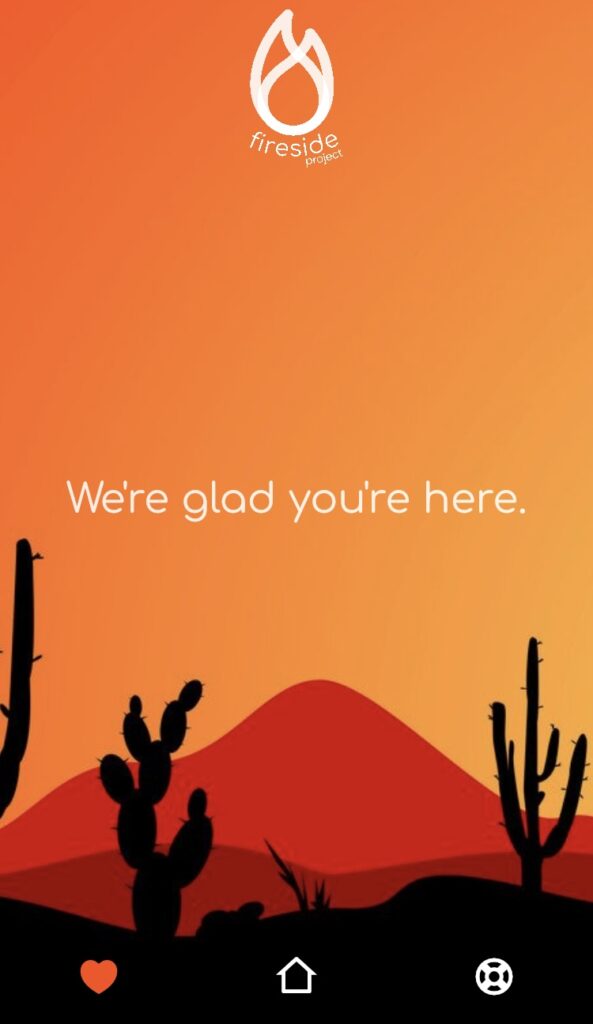

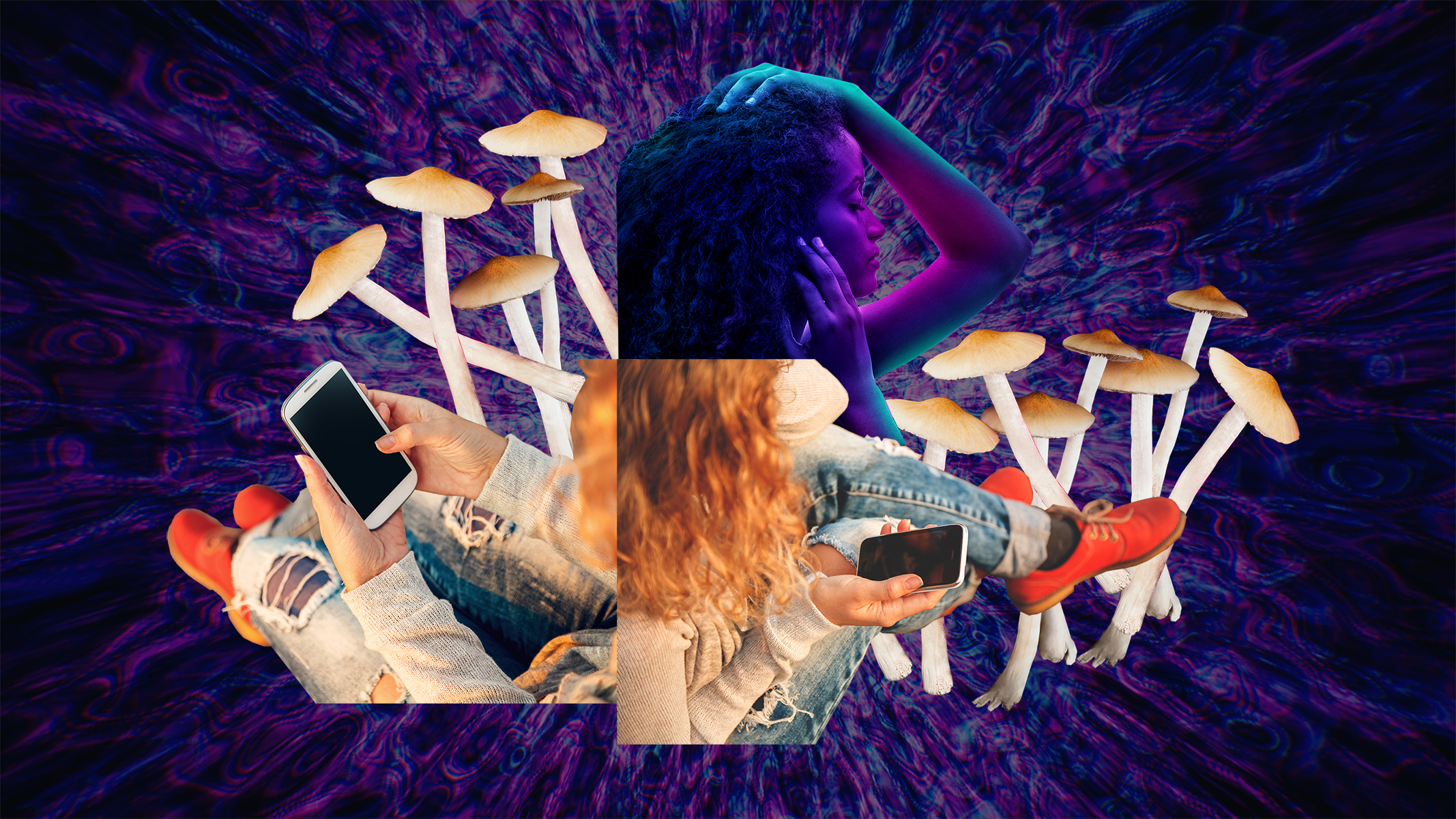



There probably are records of therapeutic LSD use in Saskatchewan, kicking around from the old Hoffer/Osmond days prior to the DEA sanctions from the US. Prior to the DEA “saving” that region of North America, the Canadians treated a multitude of alcoholics with psychedelic therapy, which led the province to make psychedelic therapy mainstream until the DEA saved Saskatchewan from LSD by threatening the province with isolation.
Report comment